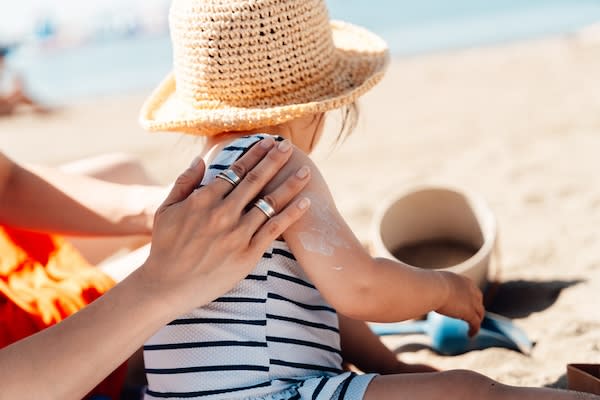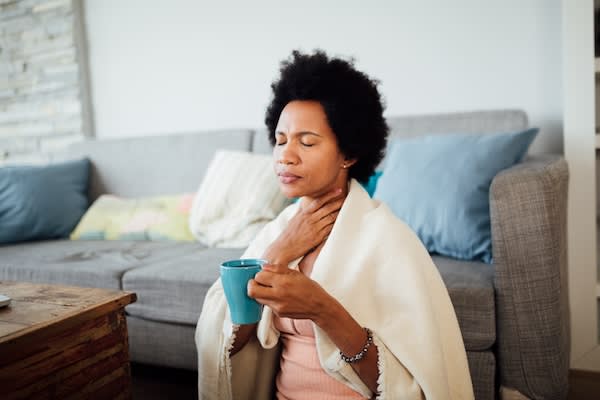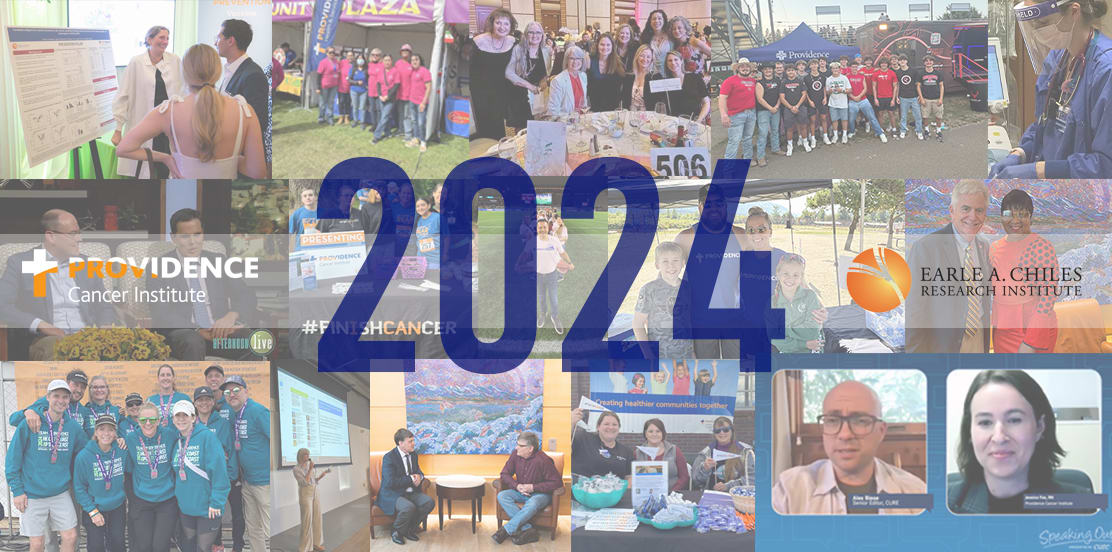UV protection guide: Stay safe in the sun

[5 MIN READ]
In this article:
-
UV rays can be harmful for your skin, which is why you should use sun protection when you’re outside.
-
You might think you can’t get sunburned in the winter, but UV rays can reflect off of ski slopes, which can lead to sunburn.
-
Avoid tanning beds at all costs, as they can severely damage your skin.
Ultimate guide to protecting yourself from UV rays
Throughout the middle years of the 20th century, lotion that protected you from the sun was not generally referred to as “sunblock.” Instead, people who were eager for golden or bronze skin applied “suntan lotion” with the hopes that their skin would turn darker faster. In the 1970s and 80s, tanning oil also increased in popularity.
Today, we know much more about the harmful effects of ultraviolet (UV) rays and how they affect the skin. During UV Safety Awareness Month this July, Providence is sharing some sun safety resources and information you can use to protect your skin — especially during the summer, when you’re outdoors and have the most exposed skin. The more you know about ways to protect your skin, the more you can limit your risk of skin cancer or benefit from less-invasive treatment options.
What are UV rays?
First, let’s take a look at what UV rays actually are. Scientists use the electromagnetic (EM) spectrum to classify different types of EM energy, including microwaves, radio signals and X-rays, according to how energetic the photons are, and the size of the wavelength in each category. UV radiation is in the portion of the EM spectrum between X-rays and visible light.
Types of UV rays and their effects on skin
The most common form of UV radiation is sunlight, which produces three types of UV rays:
- UVA rays – These have the longest wavelength and can penetrate the middle layer of your skin, called the dermis.
- UVB rays – These have a short wavelength that reaches the outer layer of your skin, the epidermis.
- UVC rays – These types of rays from the sun do not reach the earth’s surface, because they are blocked by the ozone layer. So, the only way to be exposed to these types of rays is through a tanning lamp or laser.
“UV radiation from the sun is a major contributor to skin cancer,” says Trevan Fischer, M.D., a surgical oncologist at Providence Specialty Medical Group in Santa Monica, California. “This occurs mostly by the UV radiation directly causing damage to the DNA, which can lead to mutations allowing for uncontrolled cell growth.”
Common myths about sun exposure
There are a number of myths circulating about whether certain types of sun exposure can be dangerous. Here are some of the most common ones:
Myth: You can’t get sunburned in the shade.
Fact: Even when you think you’re safe hanging out under a tree or umbrella, you’re still at risk for sunburn. The reflection of UV rays off the pavement or sand can burn your skin. According to the Skin Cancer Foundation, “the amount of UV present beneath an umbrella can be up to 84% of that in [the] sun depending on the levels of indirect UV.” Regardless of whether you plan on staying in the shade, remember to apply sunscreen.
Myth: You can’t get sunburned while you’re inside your car.
Fact: You can’t control where the sun is when you’re driving, so it’s easy to get unintentionally exposed in the car. You can avoid sunburn while driving by installing window film on your windows, which screens out UVA and UVB radiation. If it’s a sunny day, you should also apply sunscreen while you’re driving.
Myth: You can’t get sunburned in the winter.
Fact: You can, in fact, get a sunburn in the winter — especially when you’re skiing. Bright sun reflects off the white snow — and directly onto the skiers on that snow. Always remember to apply broad-spectrum sunscreen with at least a 30 SPF (sun protection factor) and reapply every two hours.
How to protect yourself from UV rays
Most of your exposure to the sun occurs before age 25, so it’s critical to develop good skin protection habits when you’re younger. The World Health Organization recommends you get between five and 15 minutes of sun exposure two to three times a week. But when you do, be sure to wear sunscreen and sun-protective clothing and stay in the shade as much as possible. It’s best to use sunscreen with an SPF of at least 30. Anything less than that puts you at risk for sunburn and skin cancer — especially if you have pale skin.
Reapply sunscreen every two hours when you are out in the sun, and every half hour if you’re sweating. If you are just going in and out of the car, you can reapply every four hours.
“Most importantly, avoid tanning beds at all costs!” says Dr. Fischer. Tanning beds use more UV radiation, and the rays penetrate even deeper into your skin. In fact, the number of melanoma cases diagnosed in women in their 40s who have a history of tanning bed use is growing.
Protecting your kids from sunburn
Preventing sunburn during childhood is an important way to avoid sun damage and skin cancer later in life. If you’re taking a child younger than six months old outside, dress them in lightweight clothing that covers their skin, and keep them in the shade. Kids older than six months need head-to-toe coverage when they’re out in the sun. It can be helpful to purchase UV protection swimwear, which adds an extra layer of safety. Help your child apply sunscreen and set a good example by using it yourself. You can also encourage your kids to avoid sun exposure at school by playing in the shade, wearing sunglasses and wide-brimmed hats, wearing long-sleeved shirts, and putting on sunscreen before recess.
If you have teens who want to have bronze skin during the summer, be consistent with your anti-tanning message, repeating it in as many different ways as possible. Make sure your teens see you liberally applying sunscreen and making an effort to stay out of the sun. If your children insist they look better with a tan, you can suggest non-UV tanning options, such as self-tanners and spray tans.
Contributing caregiver

Trevan Fischer, M.D., is a surgical oncologist at Providence Specialty Medical Group in Santa Monica, California.
Find a doctor
If you are looking for a Providence provider, you can search for one who’s right for you in our provider directory.
Download the Providence app
It’s all in the app: easily stay connected with Providence and your health. With the Providence app, you can schedule appointments, have virtual visits from the comfort of your own home, get health recommendations personalized for you, access your health records and so much more. Learn more and download the app.
Related resources
Ways to protect your skin as summer heats up
How to look for basal cell carcinoma
This information is not intended as a substitute for professional medical care. Always follow your health care professional’s instructions.



